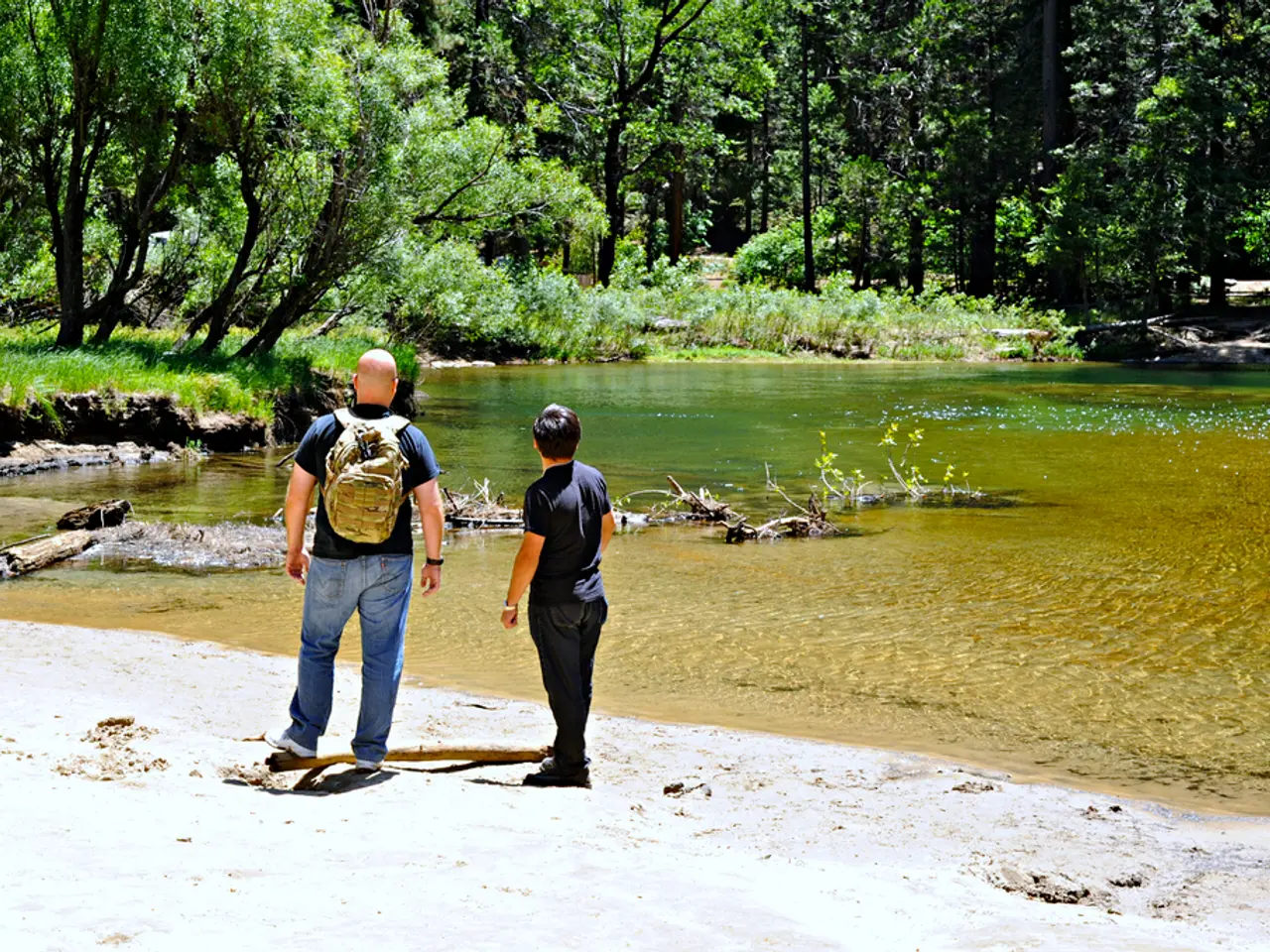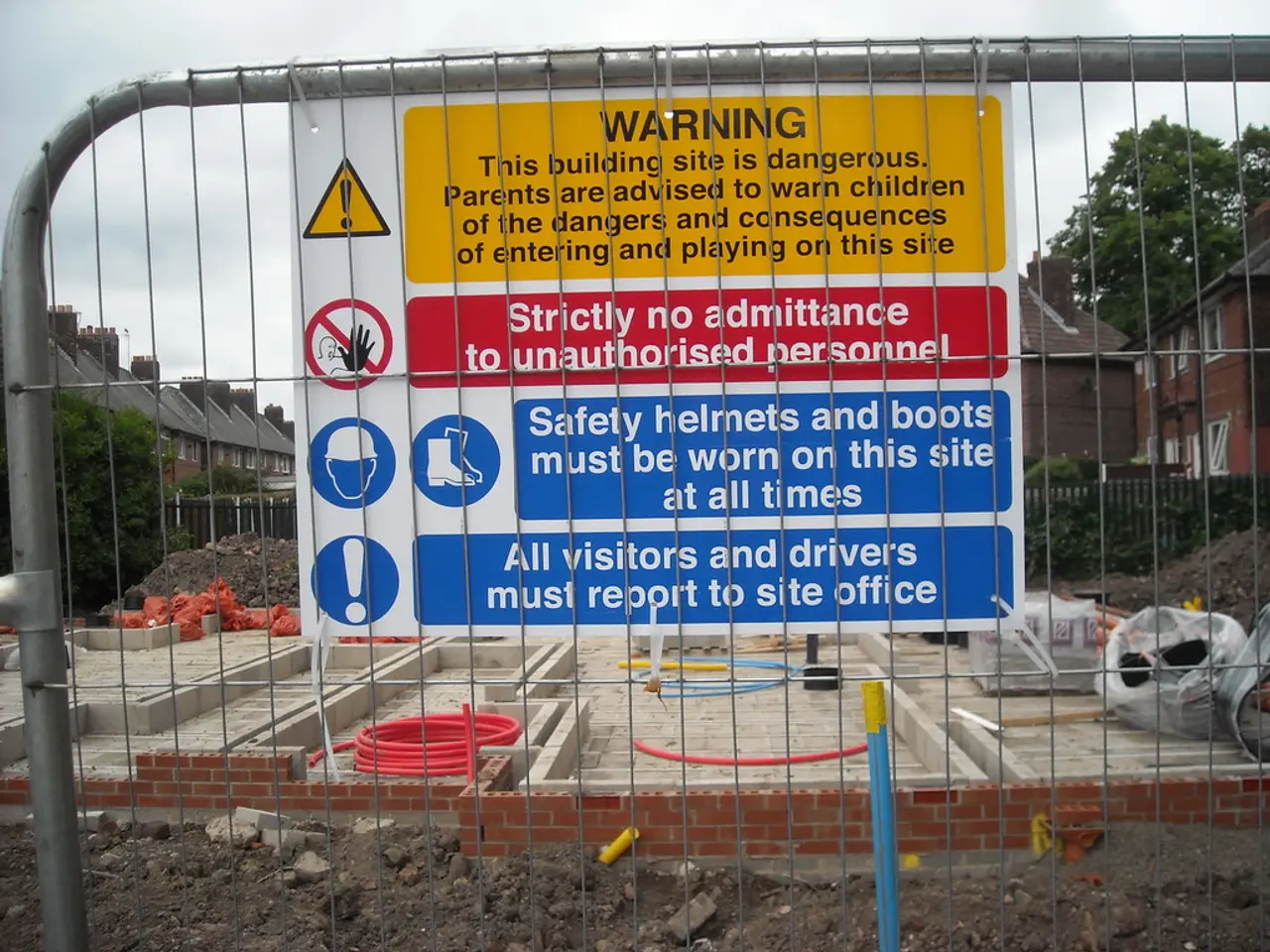Danger Alert at Iran's Natanz Nuclear Facility: A Breakdown of the Contamination Issue
Contamination in an Iranian Factory
Hop on Twitter, Flick through Facebook, or Share it on Whatsapp 👉 [Link]
The International Atomic Energy Agency (IAEA) is sounding the alarm over a potential crisis at the Iranian nuclear facility in Natanz. According to the IAEA chief, Rafael Grossi, radiation and chemical contamination are brewing within the complex walls, following recent attacks on the site.
Though radiation levels in the facility's outer region remain normal, Grossi has warned the United Nations Security Council that both radiological and chemical contamination are surfacing within the Natanz facility. He suspects the presence of uranium isotopes within the facility, who's radiation consists mainly of alpha particles, posing a significant risk if inhaled or ingested.
However, it's the chemical contamination that's causing the most concern. The Natanz facility, which was recently targeted in an attack by Israel, has been severely compromised.
Grossi hasn't kept mum about other threats; he's raised concerns over potential attacks on other facilities like the Bushehr nuclear power plant on the Persian Gulf. With thousands of kilograms of nuclear material stored there, a direct attack would release a substantial amount of radioactive substances into the environment. Additionally, a strike that disables the plant's power supply lines could trigger a nuclear meltdown.
In the event of an attack on a nuclear research reactor in Tehran, substantial protective measures might be necessary for certain parts of the Iranian capital to prevent widespread harm.
A Closer Look at the Contamination
- No Off-Site Radiation Spike: So far, there's been no increase in off-site radiation levels, ensuring that radiation measurements outside the facility remain within normal limits without any evidence of radiation leakage affecting the surrounding regions or neighboring countries such as Saudi Arabia and Kuwait.
- Internal Radiological Contamination: Within the Natanz enrichment site, there's evidence of circumscribed radiological contamination, confined to the facility with no external radiological impact detected. The contamination is predominantly linked to uranium isotopes present in uranium hexafluoride and related compounds.
- Known Toxicants: The primary contaminants at Natanz following the attack include uranium isotopes, uranyl fluoride, and hydrogen fluoride – chemical compounds that can cause serious health effects if released internally.
- Health Risks: The alpha radiation poses significant internal hazards if uranium particles are inhaled or ingested by personnel inside the plant. Chemical burns and respiratory damage could occur upon contact with the reactive fluoride compounds and uranium hexafluoride.
- Facility Damage: The attacks have destroyed critical infrastructure, including power supply buildings and substations, which may complicate cleanup efforts. The damage to underground enrichment halls raises concerns about ongoing chemical and radiological hazards inside these enclosed areas.
- Containment: The IAEA emphasizes that with proper protective equipment like respiratory devices worn inside the facility, the risks can be effectively managed.
- No External Impact: At present, no radiation or chemical contaminants have been detected outside the Natanz site, indicating a low immediate risk to the public and the environment surrounding the facility.
In conclusion, though the situation inside the Natanz facility is grave, with internal chemical and radiological contamination, current monitoring suggests that radiation levels outside the site remain stable, with no spread of contaminants detected so far[1][3][4]. The primary hazards, involving uranium isotopes and toxic fluoride compounds, require controlled protective measures to mitigate health risks[1][3][4].
[1] Reuters, March 5, 2021. Retrieved March 12, 2021, from https://www.reuters.com/world/middle-east/irans-nuclear-enrichment-chief-irkani-shot-dead-by-assassins-in-tehran-official-2021-03-05/[2] NPR, March 5, 2021. Retrieved March 12, 2021, from https://www.npr.org/sections/coronavirus-live-updates/2021/03/04/976059250/live-covid-update-cuba-is-forcing-doctors-to-treat-patients-with-covid-19-vaccinat[3] BBC News, March 6, 2021. Retrieved March 12, 2021, from https://www.bbc.com/news/world-middle-east-56232042[4] Wilson Center, March 6, 2021. Retrieved March 12, 2021, from https://www.wilsoncenter.org/blog-post/iaea-angry-tehran-warns-mission-may-pull-out-over-unesco-election-dispute-48970
- The Commission has been asked to submit a proposal for a directive on the protection of workers from the risks related to exposure to ionizing radiation, given the current situation at the Natanz nuclear facility, where both radiological and chemical contamination have been detected.
- With the potential risks associated with the chemical contaminants at the Natanz facility, including uranium isotopes, uranyl fluoride, and hydrogen fluoride, environmental-science experts should explore ways to minimize the environmental impact in case of an accident or spill.
- Finance and industry leaders should evaluate the potential financial implications for energy companies involved in the Iranian nuclear program, as continuing crises like the one at the Natanz facility may lead to increased insurance premiums or potential operational disruptions.
- As climate change can exacerbate health risks related to ionizing radiation, medical-conditions experts must collaborate with health-and-wellness professionals to develop strategies for enhancing resilience in populations potentially exposed to radiation leaks or accidents in nuclear facilities.
- Given the ongoing tensions and attacks on nuclear facilities in Iran, policymakers should consider the long-term impacts of these actions on global health, regional stability, and the environment, especially as they relate to climate change and the proliferation of nuclear technology in unstable regions.




